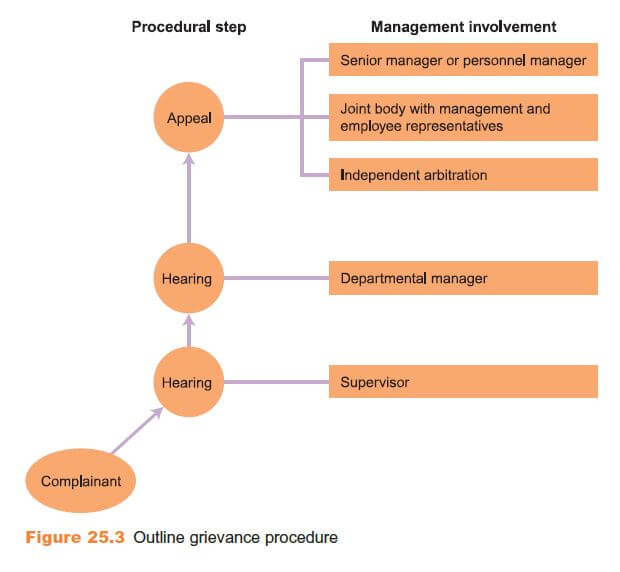Procedure of Grievance
There are certain managers who have hard feelings about grievance procedure and its formalities. This basically arises because of the unnecessary rigidity that can be seen the corporate relationships. One of the important reasons that make employees refrain themselves to go and have a talk to their seniors about their problems is the thinking that such step can become controversial. Another of the fears revolves around disciplinary penalty.
If a certain structure has formality, employees can put forward their issue. And this will also encourage the fact that managers cannot overlook the problems.
 Representation
Representation
Work management can be maintained efficiently with the help of representation. This is especially good for those workers who are neither experienced nor are confident. If you consider a union official, he is an experienced person who has an idea of the issue that can arise and he also knows how to handle large groups of employees.
Again with this benefit, there are certain risks revolving around management attitude. This can influence not only union officials but also managers. Here the involved manager has to listen to every grievance factors and issues carefully and only after that can he choose a correct representative.
Fairness
It is an important factor that is essential to keep the process feasible. Value of fairness won’t exist of the employees lose their trust in this process. In scenarios like this, the issues of grievances will multiply in number. If grievances are managed carefully with even handedness, the value of fairness won’t be lost. Added to it, the appealing stage in an independent arbitration or a joint body will also improve.
Promptness
Delay in work and justice can lead to frustration and bitterness. An employee going through the process is similar to setting him in a train of communication cord. If actions are taken seriously, this can fasten the total process,and it won’t take much time to present a resolution. The manager who will be seeing the entire process will be at an extremely crucial phase as every decision of his will be evaluated and questioned.
One of the best ways to make the entire process move at a faster pace is to set time limits. These are basically between the steps that comprise of the working procedure.Primary noticed against the appeal shouldn’t be more than 5 days. This is a period where managers reflect over the initiatives that they have taken to resolve the issues.
Procedural steps
Here the steps should be constricted to 3 in number. In case there are more management hierarchy levels, it doesn’t make any sense to include more steps. More steps mean stretching the matter for a longer duration. A factor like this can create issues of disrepute. The number of steps has always been stuck to 3 as they are prominent and are best to settle corporate grievances.
However, if you take a look at steeper hierarchy, you will find steps more than 3 in number. These excessive steps are not dependent on the functionality of the process. Here the main concern is related to the organisation structure and its functioning.
1st step – Preliminary
The employees can immediately lodge complaints on grievance to their seniors. If considered a normal official week, managers do listen to the queries of employees. It is entirely dependent on the reaction of the manager that makes dissatisfaction a grievance. In this case, the manager will either refrain from considering the issue as grievance or he will consider it and provide an apropos resolution to that employee.
Even though this step is preliminary, it is tangible. This is because managers do have the authority to consider, analyse and review the issues that have caused grievances.
The second step comprises of hearing where the employee who has lodged a complaint can take his or her complaint and directly approach to senior manager. Being in a senior position, this authoritative figure has a broader overview regarding such matters. He may be able to see issues with higher perspective and give an effective solution.
It is imperative that finalisation of hearing should be as soon as possible. This should not become an irksome procedure where an employee could lose the faith he has from the management body. Just because of this reason there are only 3 steps.
In case there is an appeal, taking the issue to more higher management can increase the chance of confirming an outcome. If required, decision modification is also possible.
There may be collective disputes within an organisation for both individual grievances as well as disputes procedure. In situations like this, link between individual matters are important and can be acquired to attain support. This can be helpful in case no satisfactory outcome is seen.
Links of Previous Main Topic:-
- Health safety and welfare
- Equality the legal framework
- Equal opportunities and diversity
- Grievance and discipline
- The milgram experiments with obedience
Links of Next HR Management Topics:-







